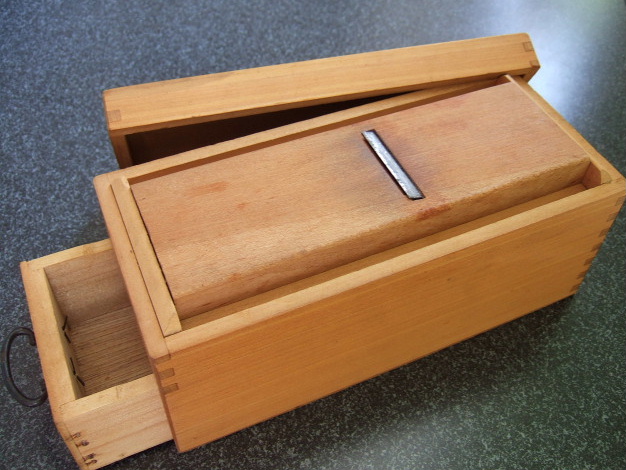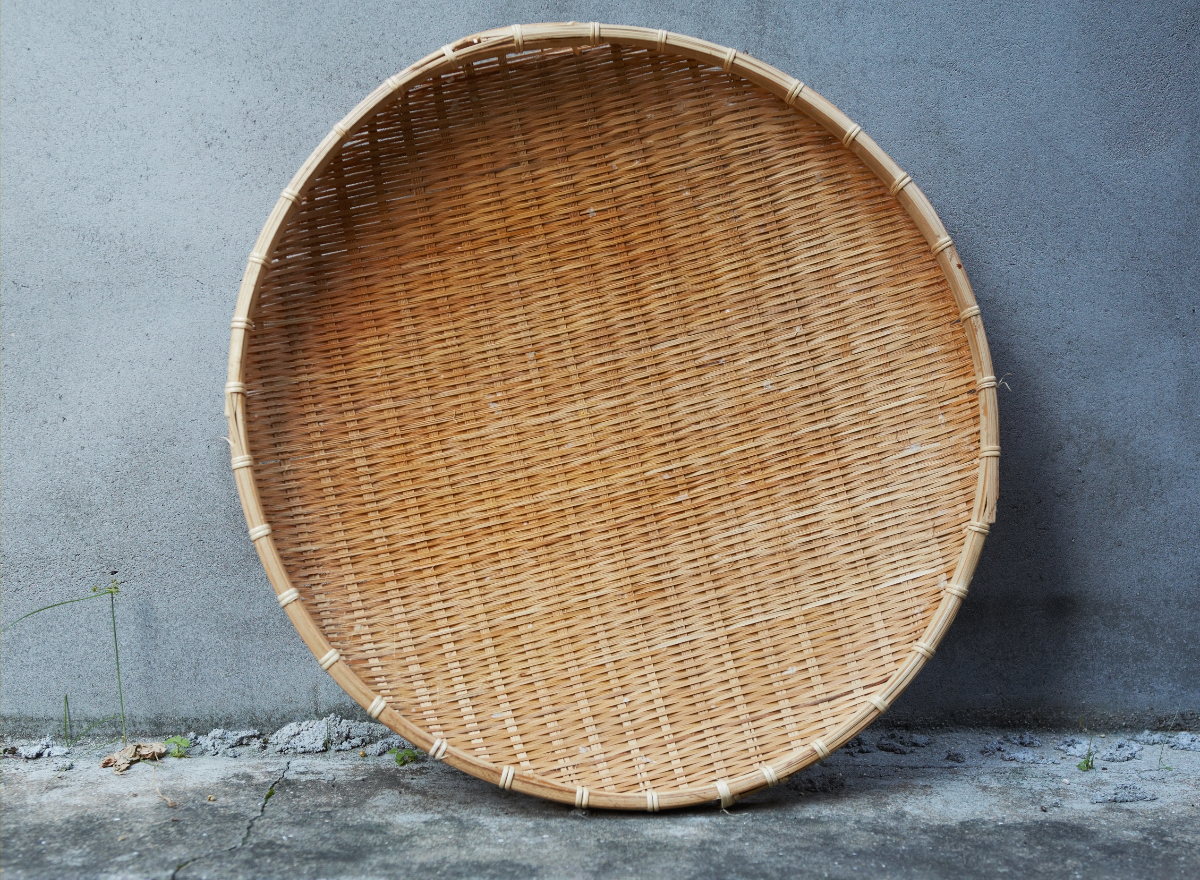|
Zaru
A is generally a flat or shallow basket made from bamboo used in the preparation and presentation of Japanese cuisine. It also has variations made of plastic or metal similar to a strainer, sieve or colander. ''Zaru'' are air dried after use to prevent the growth of bacteria or fungi on the mat and extend their lifespan. However, drying in harsh sunlight can cause the bamboo of the ''zaru'' to crack. Reflecting the zaru's capacity to soak up liquid, this term is also used as slang for a person who can drink a lot of alcohol without showing signs of inebriation. File:Zaru.jpg, ''Zaru'' made from bamboo File:Seiro_soba_at_Takasho_in_Nezu,_Tokyo.jpg, ''Soba'' served on a ''zaru'' See also * List of Japanese cooking utensils * Chinois * Filter * Sieve * Sokuri ''Sokuri'' ( ko, 소쿠리, ) is a round, rimmed woven basket made of finely-split bamboo. It is used for straining washed grains, drying vegetables, or draining fried food in Korea. It measures between 25 and 50& ... [...More Info...] [...Related Items...] OR: [Wikipedia] [Google] [Baidu] |
Soba
Soba ( or , "buckwheat") is a thin Japanese noodle made from buckwheat. The noodles are served either chilled with a dipping sauce, or hot in a noodle soup. The variety ''Nagano soba'' includes wheat flour. In Japan, soba noodles can be found in a variety of settings, from "fast food" places to expensive specialty restaurants. Markets sell dried noodles and '' men-tsuyu'', or instant noodle broth, to make home preparation easy. A wide variety of dishes, both hot for winter and cold for summer, uses these noodles. The amino acid balance of the protein in buckwheat, and therefore in soba, is well matched to the needs of humans and can complement the amino acid deficiencies of other staples such as rice and wheat (see protein combining). The tradition of eating soba arose in the Edo period. History of soba in Japan, development of eateries The tradition of eating soba originates from the Tokugawa period, also called the Edo period, from 1603 to 1868. In the Tokugawa period, eve ... [...More Info...] [...Related Items...] OR: [Wikipedia] [Google] [Baidu] |
Sieve
A sieve, fine mesh strainer, or sift, is a device for separating wanted elements from unwanted material or for controlling the particle size distribution of a sample, using a screen such as a woven mesh or net or perforated sheet material. The word ''sift'' derives from ''sieve''. In cooking, a sifter is used to separate and break up clumps in dry ingredients such as flour, as well as to aerate and combine them. A strainer (see Colander), meanwhile, is a form of sieve used to separate suspended solids from a liquid by filtration. Industrial strainer Some industrial strainers available are simplex basket strainers, duplex basket strainers, T-strainers and Y-strainers. Simple basket strainers are used to protect valuable or sensitive equipment in systems that are meant to be shut down temporarily. Some commonly used strainers are bell mouth strainers, foot valve strainers, basket strainers. Most processing industries (mainly pharmaceutical, coatings and liquid food indu ... [...More Info...] [...Related Items...] OR: [Wikipedia] [Google] [Baidu] |
Sieve
A sieve, fine mesh strainer, or sift, is a device for separating wanted elements from unwanted material or for controlling the particle size distribution of a sample, using a screen such as a woven mesh or net or perforated sheet material. The word ''sift'' derives from ''sieve''. In cooking, a sifter is used to separate and break up clumps in dry ingredients such as flour, as well as to aerate and combine them. A strainer (see Colander), meanwhile, is a form of sieve used to separate suspended solids from a liquid by filtration. Industrial strainer Some industrial strainers available are simplex basket strainers, duplex basket strainers, T-strainers and Y-strainers. Simple basket strainers are used to protect valuable or sensitive equipment in systems that are meant to be shut down temporarily. Some commonly used strainers are bell mouth strainers, foot valve strainers, basket strainers. Most processing industries (mainly pharmaceutical, coatings and liquid food indu ... [...More Info...] [...Related Items...] OR: [Wikipedia] [Google] [Baidu] |
Colander
A colander (or cullender) is a kitchen utensil used to strain foods such as pasta or to rinse vegetables. The perforated nature of the colander allows liquid to drain through while retaining the solids inside. It is sometimes also called a pasta strainer or kitchen sieve. Description and history Traditionally, colanders are made of a light metal, such as aluminium or thinly rolled stainless steel. Colanders are also made of plastic, silicone, ceramic, and enamelware. The word ''colander'' comes from the Latin ''colum'', meaning sieve. Types of colanders * Bowl- or cone-shaped – the traditional colander * Mated colander pot Other uses The colander in the form of a pasta strainer was adopted as the religious headgear of the religion Pastafarianism in deference to the Flying Spaghetti Monster. See also * Chinois * Filter (chemistry), Filter * Zaru References External links * * Food preparation utensils Filters Religious headgear {{Cooking-tool-stub ... [...More Info...] [...Related Items...] OR: [Wikipedia] [Google] [Baidu] |
List Of Japanese Cooking Utensils
The following items are common Japanese cooking tools used in preparing Japanese cuisine. For a list of general cooking tools see the list of food preparation utensils. Knives *''Deba bōchō'': kitchen carver for meat and fish *'' Fugu hiki'', ''Tako hiki'', and ''yanagi ba'': ''sashimi'' slicers *'' Nakiri bocho'' and '' usuba bocho'': vegetable knives for vegetables *'' Oroshi hocho'' and '' hancho hocho'': extremely long knives to fillet tuna *''Santoku'': general purpose knife influenced by European styles *''Udon kiri'' and '' soba kiri'': knife to make udon and soba *'' Unagisaki hocho'': eel knife Pots, pans, and bowls *''Abura kiri'': drainer tray for oils *'' Agemono nabe'': deep frying pot *''Donabe'': ceramic pot for use on an open flame *''Hangiri'': rice barrel *''Makiyakinabe'': rectangular pan for ''tamagoyaki'' *''Mushiki'' and '' seiro'': steamers *''Otoshi buta'': drop lid *'' Suihanki/rice cooker'': electric appliance for cooking rice *'' ''suribachi'' and ''s ... [...More Info...] [...Related Items...] OR: [Wikipedia] [Google] [Baidu] |
Chinois
A chinois (; ) is a conical sieve with an extremely fine mesh. It is used to strain custards, purees, soups, and sauces, producing a very smooth texture. It can also be used to dust food with a fine layer of powdered ingredient. Etymology ''Chinois'' is a loanword from the French adjective meaning Chinese. French cooks call it this not because this kitchen tool comes from China, but because it resembles an Asian conical hat Description A related utensil is the tamis – a flat strainer through which food is pressed with a scraper or pestle. A similarly-shaped utensil is the China cap, a reference to the conical Asian hats that used to be common in China. It is a perforated metal conical strainer with much larger holes than a chinois. A China cap is used to remove seeds and other coarse matter from soft foods, but produces a coarser-textured product than the chinois. Both the chinois and the China cap often are used with a cone-shaped pestle. With the pestle tip placed i ... [...More Info...] [...Related Items...] OR: [Wikipedia] [Google] [Baidu] |
Sokuri
''Sokuri'' ( ko, 소쿠리, ) is a round, rimmed woven basket made of finely-split bamboo. It is used for straining washed grains, drying vegetables, or draining fried food in Korea. It measures between 25 and 50 cm in diameter, and has a standing contour measuring some 4 cm. Gallery Persimmons and soybeans.jpg, Persimmons and soybeans on ''sokuri'' Dongtae-jeon.jpg, ''Dongtae- jeon'' on ''sokuri'' See also * Bamboo weaving * ''Wanchojang'' * ''Zaru A is generally a flat or shallow basket made from bamboo used in the preparation and presentation of Japanese cuisine. It also has variations made of plastic or metal similar to a strainer, sieve or colander. ''Zaru'' are air dried after use ...'' References Bamboo weaving Basket weaving Crafts Food storage containers Kitchenware Korean cuisine Korean food preparation utensils {{Kitchenware-stub ... [...More Info...] [...Related Items...] OR: [Wikipedia] [Google] [Baidu] |
Cuisine Of Japan
Japanese cuisine encompasses the regional and traditional foods of Japan, which have developed through centuries of political, economic, and social changes. The traditional cuisine of Japan (Japanese: ) is based on rice with miso soup and other dishes; there is an emphasis on seasonal ingredients. Side dishes often consist of fish, pickled vegetables, and vegetables cooked in broth. Seafood is common, often grilled, but also served raw as sashimi or in sushi. Seafood and vegetables are also deep-fried in a light batter, as '. Apart from rice, a staple includes noodles, such as soba and udon. Japan also has many simmered dishes, such as fish products in broth called , or beef in and . Historically influenced by Chinese cuisine, Japanese cuisine has also opened up to influence from Western cuisines in the modern era. Dishes inspired by foreign food—in particular Chinese food—like ramen and , as well as foods like spaghetti, curry and hamburgers, have been adapted to Japanes ... [...More Info...] [...Related Items...] OR: [Wikipedia] [Google] [Baidu] |
Bacteria
Bacteria (; singular: bacterium) are ubiquitous, mostly free-living organisms often consisting of one biological cell. They constitute a large domain of prokaryotic microorganisms. Typically a few micrometres in length, bacteria were among the first life forms to appear on Earth, and are present in most of its habitats. Bacteria inhabit soil, water, acidic hot springs, radioactive waste, and the deep biosphere of Earth's crust. Bacteria are vital in many stages of the nutrient cycle by recycling nutrients such as the fixation of nitrogen from the atmosphere. The nutrient cycle includes the decomposition of dead bodies; bacteria are responsible for the putrefaction stage in this process. In the biological communities surrounding hydrothermal vents and cold seeps, extremophile bacteria provide the nutrients needed to sustain life by converting dissolved compounds, such as hydrogen sulphide and methane, to energy. Bacteria also live in symbiotic and parasitic relationsh ... [...More Info...] [...Related Items...] OR: [Wikipedia] [Google] [Baidu] |
Fungus
A fungus ( : fungi or funguses) is any member of the group of eukaryotic organisms that includes microorganisms such as yeasts and molds, as well as the more familiar mushrooms. These organisms are classified as a kingdom, separately from the other eukaryotic kingdoms, which by one traditional classification include Plantae, Animalia, Protozoa, and Chromista. A characteristic that places fungi in a different kingdom from plants, bacteria, and some protists is chitin in their cell walls. Fungi, like animals, are heterotrophs; they acquire their food by absorbing dissolved molecules, typically by secreting digestive enzymes into their environment. Fungi do not photosynthesize. Growth is their means of mobility, except for spores (a few of which are flagellated), which may travel through the air or water. Fungi are the principal decomposers in ecological systems. These and other differences place fungi in a single group of related organisms, named the ''Eumycota'' (''true f ... [...More Info...] [...Related Items...] OR: [Wikipedia] [Google] [Baidu] |
Bamboo
Bamboos are a diverse group of evergreen perennial flowering plants making up the subfamily Bambusoideae of the grass family Poaceae. Giant bamboos are the largest members of the grass family. The origin of the word "bamboo" is uncertain, but it probably comes from the Dutch or Portuguese language, which originally borrowed it from Malay or Kannada. In bamboo, as in other grasses, the internodal regions of the stem are usually hollow and the vascular bundles in the cross-section are scattered throughout the stem instead of in a cylindrical arrangement. The dicotyledonous woody xylem is also absent. The absence of secondary growth wood causes the stems of monocots, including the palms and large bamboos, to be columnar rather than tapering. Bamboos include some of the fastest-growing plants in the world, due to a unique rhizome-dependent system. Certain species of bamboo can grow within a 24-hour period, at a rate of almost an hour (equivalent to 1 mm every 90 seco ... [...More Info...] [...Related Items...] OR: [Wikipedia] [Google] [Baidu] |










